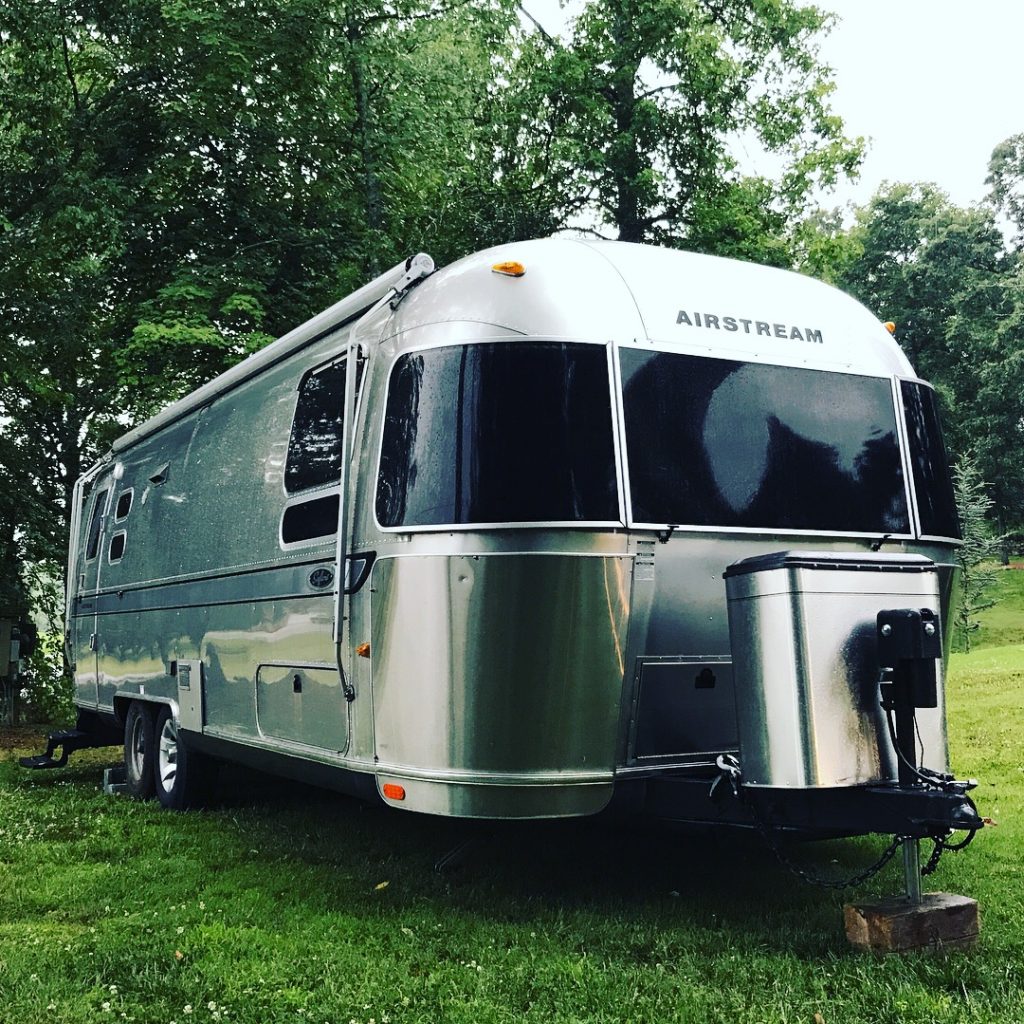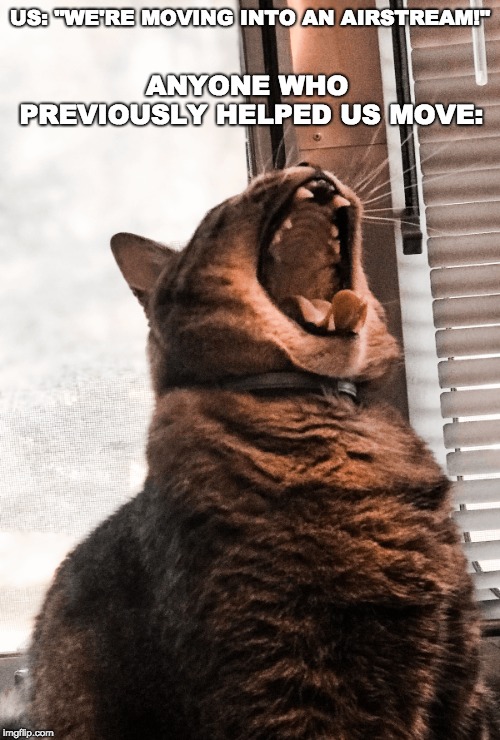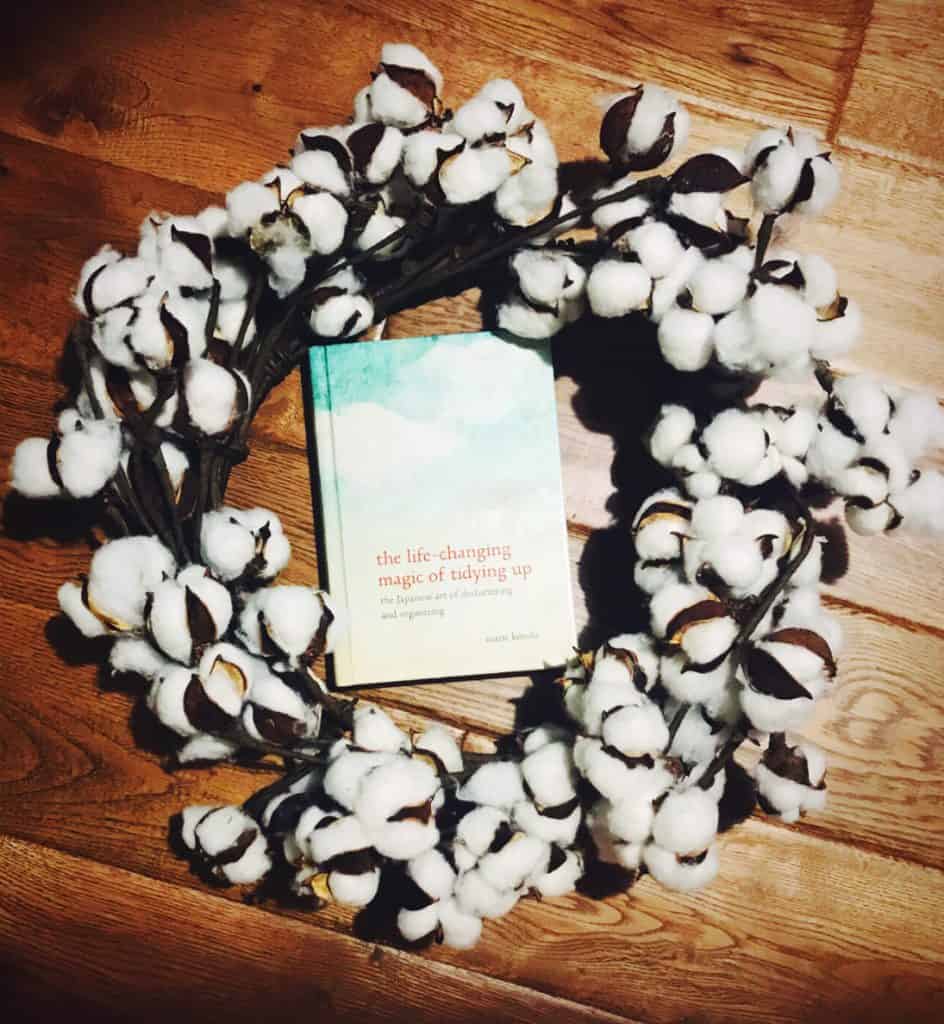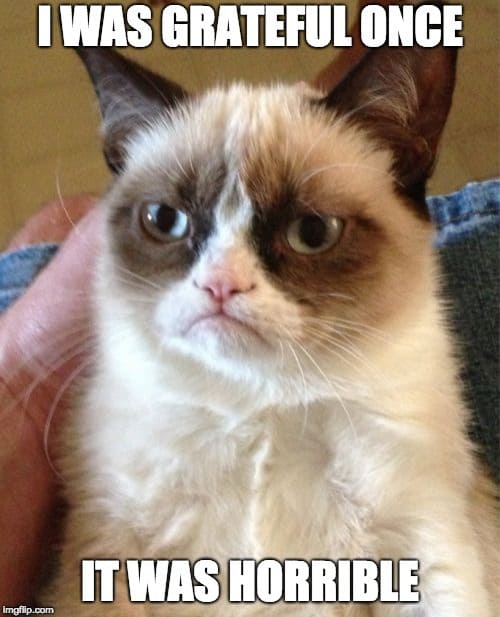This post may contain affiliate links. Please read our affiliate disclaimer for more information.
When Nick and I first decided to live in an RV full-time, we weren’t minimalists. In fact, anyone who helped us move between 1 of the 3 apartments we lived in during our first 3 years of marriage would call us maximalists.

Why I Still Don’t Identify As A Minimalist
I really like stuff. I always have, and I probably always will. In fact, shopping at TJ Maxx with my mom, MeeMaw, and aunts is one of my favorite ways to spend an afternoon. And I don’t think there’s anything wrong with that, assuming you do it in the right way.

Um, Hello. There’s No Wrong Way to Shop.
Actually, there is. I used to have a really difficult time saying “no” to items I just semi-liked. The lack of funds in my spending money budget was repeatedly overruled by my fondness for a particular item.
But a few months ago, I read a book that completely revolutionized my mindset with regards to purchasing and allowing items into my home.
I still enjoy shopping with my family. But now it’s much easier to enjoy spending time with them without actually buying anything. When you have your space in order, you become averse to adding anything unless you truly love the item. So you just naturally buy and spend less.
So What Saved My Spending Money Budget From Being Eternally Negative?
The Life-Changing Magic of Tidying Up by Marie Kondo.
I had never heard of it when I stumbled across it in a used bookstore. But Nick informed me it was all the rage among minimalists. For whatever reason, the mood was right and my maximalist-self decided to read it.
Joy vs. Happiness
I want to preface the remainder of this article with a short philosophical talk on joy vs. happiness.
Nick and I believe that joy is an internal state that comes from knowing our Heavenly Father and his redeeming love.
Happiness, on the other hand, is much more fleeting. Happiness is a feeling that can be externally triggered by something like a new outfit or a scene in a funny movie.
Marie Kondo writes from a different cultural and religious perspective. And I’ve seen other bloggers ‘disagree’ with Kondo due to the joy vs. happiness differentiation. But I think we’re all essentially saying the same things.
For the sake of consistency, I’ve used ‘joy’ as Kondo does in her book. But I just wanted to clarify that I do not believe you’ll ever find joy in your stuff or lack thereof.
What’s So Magical About This Book?
I thought this would be another book telling me to only own 7 shirts, 2 pants, and 3 pairs of shoes… you know you’ve seen those minimalist closet checklists. But Kondo’s approach is completely different.
She lays out a great system for tidying up. She even teaches you how to fold and store your clothes (and it’s definitely different than I ever came up with).
But in my mind, her trademark is her focus on gratitude. And I really do think gratitude is the key to everything.
Before Anything Else, Discard
So the first thing Kondo tells you to do is discard. Consequently, this is the first thing Nick and I found ourselves HAVING to do when we moved into the Airstream.
Getting rid of things is a struggle for me. I am sentimental to my core. And not just over family heirlooms. I can find some sentimental attachment to just about any object.
Just to put this in perspective, I still have a little glass box with a tiny piece of a Christmas tree branch in my childhood bedroom… that branch is from the last live Christmas tree that we picked out when I was a kid. We made the switch to an artificial tree when I was about 10. As you can tell, it was a very emotional time for me :).
All that being said, discarding stuff from our apartment was difficult. But the way in which Marie Kondo tells you to discard helped me to let go.
How To Discard When You Hate Discarding
First things first. When I say discard, I mean throw away, donate, whatever you need to do to get it out yo’ house.
So how did I get rid of 75% of things I owned when I hate discarding? I followed Marie Kondo’s instructions.
You divide all your stuff into categories. First, you tackle clothes, then books, documents, miscellaneous items, and finally mementos.
For each category, you put everything you own in a big pile and go through it item by item. You hold each item in your hand and ask yourself whether or not it sparks joy. If the answer is yes, then keep it! But if the answer is no, it’s time to part with that item.
Saying Goodbye
The way Marie Kondo advocates that you part with items is what made all the difference for me.
First, you recognize that object’s purpose. Maybe you bought a blouse that you loved in the store but decided it really didn’t suit you after wearing it once. That blouse served 2 purposes: 1. It gave you a thrill when you bought it and 2. It helped you learn what styles don’t suit you.
Kondo’s theory is that most items in your home have actually already fulfilled their purpose. So you should thank those items for serving their purposes and wish them well as they continue their journey.
The process may sound a little silly. But it really comes down to gratitude. When I finally analyzed the purpose of my items, it was much easier to let them go without the guilt of, “But I only wore that once,” or “Ugh, I never even used this.”
“Not all clothes have come to you to be worn threadbare. It is the same with people.”
This is one of my favorite quotes from Kondo’s book. But I think it can be a difficult concept for a lot of us to accept.
For example, my MeeMaw has clothes from the 70’s that she can’t stand to part with. They’re still in good condition, and she could still wear them if she had to. But my MeeMaw is a fashionista. She is always well-coordinated and stylish. There is absolutely no way she’ll ever wear those clothes again. (I know what you’re thinking… “What happened to you?!”… I have no idea.)

The same way that not all friends are life-long friends, not all clothes are meant to spend their entire lives with us. And that’s ok. Thank them for serving their purpose and for their contributions to your life. Then let them go!
You Can’t Cherish Things in Bulk
When you have so much stuff you can’t even remember what you have, then you really can’t cherish anything. You have tons of good, which actually causes you to underappreciate what’s best.
When you make a conscious effort to only surround yourself with things you love, then you’ll express deeper gratitude for your stuff and feel more content with what you have.
Storage is the Easy Part
When you discard things that have already served their purpose, then storing what’s left becomes easy. All you have to do is decide where to put things. But once you narrow your belongings down to what you love, you’ll have plenty of space to house them.
Once you experience the calm of everything being in it’s designated place, you’ll naturally want to maintain it. And according to Kondo (and my experience thus far), you’ll never rebound into clutter.
What If You Regret Getting Rid of Something?
But this leads me to my absolute favorite quote from Kondo’s book:
“Life becomes far easier once you know that things will still work out even if you are lacking something.” – Marie Kondo
Living in the Airstream continually reinforces this for me. There are small discomforts/ inconveniences that come up every day because we live in an RV… not enough hot water, super limited counter space for cooking, Nick and I having to suck-in and squeeze past each other if we don’t perfectly coordinate our movements through the trailer. But guess what… it’s ok! We’ve learned to deal with all those things. And the truth is, it’s just not that big of a deal.
It’s actually really freeing to know that you can live without many of the comforts you used to consider necessities. Now sure, Nick and I will enjoy living in a house someday. But I think our time in the Airstream will allow us to more fully appreciate a house and all that comes with it.
And we’ll never feel stuck. Because we know at the end of the day, we can do without most of the comforts and stuff we have.
Tidy Up to Detox Your Body And Begin a New Life
“A messy room equals a messy mind.” Marie Kondo argues (and I agree) the act of impulse buying and cluttering the house is an instinct we use to deal with stress, much like overeating.
When we complete the process of tidying our space, it naturally leads us to examine our inner state. So, tidying acts as a tool to help you reset your life. Tidying is a tool to help you reach your desired destination and focus on the things most important to you. What do ya know?… that kinda sounds like the function of a budget! Isn’t it funny how things in life that seem totally disconnected actually relate seamlessly?
Now Go Read The Life-Changing Magic of Tidying Up
Marie Kondo really hits the nail on the head with this book.
Now, she comes at things from the Japanese perspective. So there are a few sections I can’t relate to. But that’s ok.
There’s so much to learn in this gem of a book. She provides valuable insight into how your environment impacts your life and the way you feel. And she reveals how you can choose to make that a positive impact instead of a negative one.
We’d love to hear your perspective on minimalism – or minimal maximalism ;-). Happy tidying!



Love this! I’ve heard of this book before but never felt compelled to but it until now! I’ve been trying to practice minimalism in my own house, at first I may have gone a little overboard! But now I’m trying to be more balanced, it definitely is more freeing to just have less stuff. One of my favorite aspects of it is there is just so much less to clean and organize! I love having the extra time during the week to focus on better and more worthwhile things and not waste it trying to make my clutter look nice. 😉
Hey Becca! Thanks so much for reading. I’m glad you found it helpful 🙂 It’s absolutely more freeing to have less stuff, but also important to have balance. I’m glad to hear you’re working on both! I love the way you say not spending time making my clutter look nice. That’s such a true statement that unfortunately so many of us end up doing.
Thanks so much for reading!